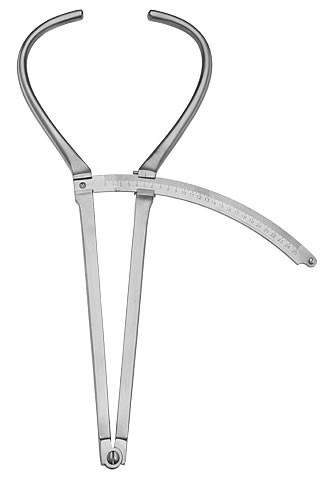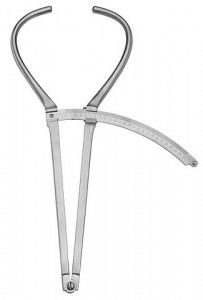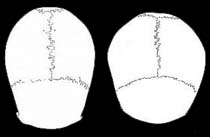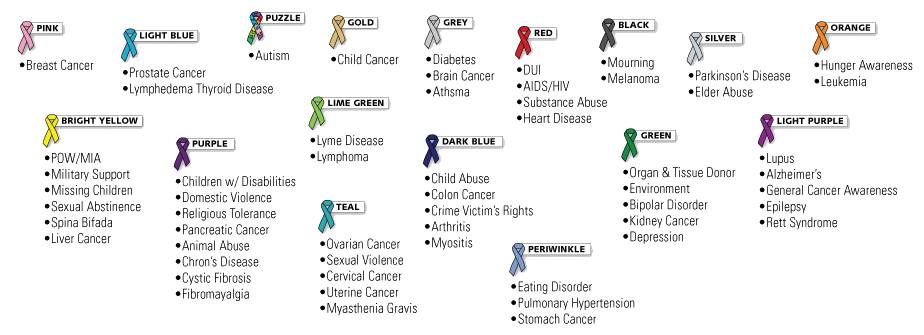Cephalic Index


Craniometry is the measurement of cranial features in order to classify people according to race, criminal temperament, intelligence, etc. Cephalic index also known as length-breadth index is derived from Greek word “kephale” meaning “head,” the Greek word “ikos” meaning “pertaining to,” and the Latin word “index” meaning “that which points out”. It is the ratio of the maximum breadth (width) of the head to its maximum length expressed as a percental number. In simple, it is the rating scale used to measure the size of the head.
The length of the skull: is the distance from the glabella (the midpoint between the brows) and opisthocranion or occipital point (the most projecting point at the back of the head).
The breadth of the skull: is the distance between the euryons or parietal tubera (most projecting points at the sides of the head, usually a little above and behind the ears).
Formula:
Cephalic index C.I. = [Head width x 100]/ Head length
According to the Frankfort Agreement of 1882 (including the amendment of the international agreement of 1883), skulls can be classified on the basis of cephalic index as:
Upto 74.9 : Dolichocephalic (long/narrow headed)
- upto 70 : Chamaecephalic
- 55 to 59.9 : Ultradolichocephalic (extremely long/narrow headed)
- 60 to 64.9 : Hyperdolichocephalic (very long/narrow headed)
- 70.1 to 75 : Orthocephalic
- Over 75 : Hypsicephalic
75 – 79.9 : Mesocephalic (intermediate in head form)
over 80 : Brachycephalic (round/short/broad headed)
- 85 – 89.9 : Hyperbrachycephalic (very round/short/broad headed)
- 90 – 94.9 : Ultrabrachycephalic (extremely round/short/broad headed)
According to the French system:
- upto 75 : Dolichocephalic
- 75.01 to 77.77 : Subdolichocephalic
- 77.78 to 80.00 : Mesocephalic
- 80.01 – 83.33 : Subbrachycephalic
- over 83.34 : Brachycephalic

Applications of Cephalic index:
- Cases of unusual head shape.
- In anthropometry, CI used originally in attempts to classify race, is now used only to describe individuals’ appearances and for estimating the age of fetuses.
- In zoology, the index is used to categorize animals, especially cats and dogs.
Sex differences in cephalic index during growth:
- Males under 7 years of age are more dolicocephalic than are the females of the same age group.
- Females from 8 to 16 years of age are more dolicocephalic
- After puberty males are more dolicocephalic
Does Cephalic Index determine intelligence in normal people?
- The underlying assumption of craniometry is that skull size and shape determine brain size which determines such things as intelligence and capacity for moral behavior. Empirical evidence for this assumption is not very strong.
- Head circumference was the most frequently used head measurement; correlations ranged from .02 in one of Lynn’s studies (1989) to .41 (Wienberg 1974).
- Cephalic index consistently produced a very low or negative correlation with mental ability.
Does cephalic index change with environment?
- Kenneth Beals determined that there is a relationship between cephalic index and climate and that the shape of the upper part of the skull is related to heat loss.
- Head shape changes as human populations moved into colder climates, a finding that holds up even in fossils dating to 1.5 mya.
- Narrow heads lose heat more quickly and advantageous in hot climates.
- Rounded heads lose heat more slowing and are advantageous in cold climates.
- Some sources also suggests malnutrition as a cause of brachycephalization (seen in Medieval Europe)





2 Comments
hello. i am a doctor from manila doctors hospital, phlippines. I would like to ask where i can buy a cephalometer. thank you and i hope you can be of help.
You can buy cephalometer here.
Comments are closed.